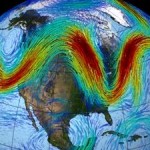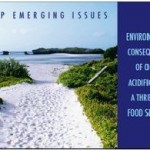
“Meat and milk really matter,” says Alexander Popp of Potsdam Institute for Climate Impact Research (PIK), Germany. “Reduced consumption could decrease the future emissions of nitrous oxide and methane from agriculture to levels below those of 1995,” explains the first author of the study.
In the past, agricultural emissions of greenhouse gases, mainly methane and nitrous oxide, have increased steadily. In 2005, they accounted for 14 percent of total anthropogenic greenhouse gas emissions. “Besides the conscious choice of food on the consumers’ side, there are technical mitigation options on the producers’ side to reduce emissions significantly,” says Popp.
The researchers used a global land use model to assess the impact of future changes in food consumption and diet shifts, but also of technological mitigation options on agricultural greenhouse gas emissions up to 2055. The global model combines information on population, income, food demand, and production costs with spatially explicit environmental data on potential crop yields.
The calculations show that global agricultural non-carbon dioxide (non-CO2) emissions increase significantly until 2055 if food energy consumption and diet preferences remain constant at the level of 1995. Taking into account changing dietary preferences towards higher value foods, like meat and milk, associated with higher income, emissions will rise even more. In contrast, reducing the demand for livestock products by 25 percent each decade from 2015 to 2055, leads to lower non-CO2emissions even compared to 1995.
Furthermore, there are technological mitigation options to decrease emissions significantly. However, these technological mitigation options are not as effective as changes in food consumption. The highest reduction potential could be achieved by a combination of both approaches, the researchers report. Compared to a scenario that takes population growth and an increase in the demand for livestock products into account, emissions of methane and nitrous oxide could be cut by 84 percent in 2055.
However, livestock products are very valuable for nutrition as they contributed globally an average of one third of protein to dietary intakes in 2003. For many poor and undernourished people in the developing world, who frequently suffer from protein deficiencies, livestock products are important parts of food consumption. In contrast, less meat-oriented diets in the developed regions would have positive health effects, the authors note.
Agricultural, non-carbon dioxide non-CO2 greenhouse gas emissions consist mainly of methane and nitrous oxide. Nitrous oxide is about 300 and methane about 20 times more effective in trapping heat in the atmosphere than carbon dioxide. Agricultural emissions originate from the use of synthetic fertilizers on croplands and from flooded rice fields. Because animal products require large amounts of fodder crops, livestock production is connected to higher emissions from fertilizer application. Additional livestock emissions occur due to manure excretion, management and application and methane producing microbes in ruminants’ digestive systems.
Title of the Case Study: “Food Consumption, Diet Shifts and Associated Non-Co2 Greenhouse Gases from Agricultural Production”
Authors: Alexander Popp, Hermann Lotze-Campen and Benjamin Bodirsky, Potsdam Institute for Climate Impact Research (PIK), PO Box 60 12 03, 14412 Potsdam, Germany.
Published: In the journal “Global Environmental Change” on March 29, 2010.
Click here to access the complete case study: http://dx.doi.org/10.1016/j.gloenvcha.2010.02.001
Source: Press Release from Potsdam Institute for Climate Impact Research (PIK) dated June 28, 2010.













